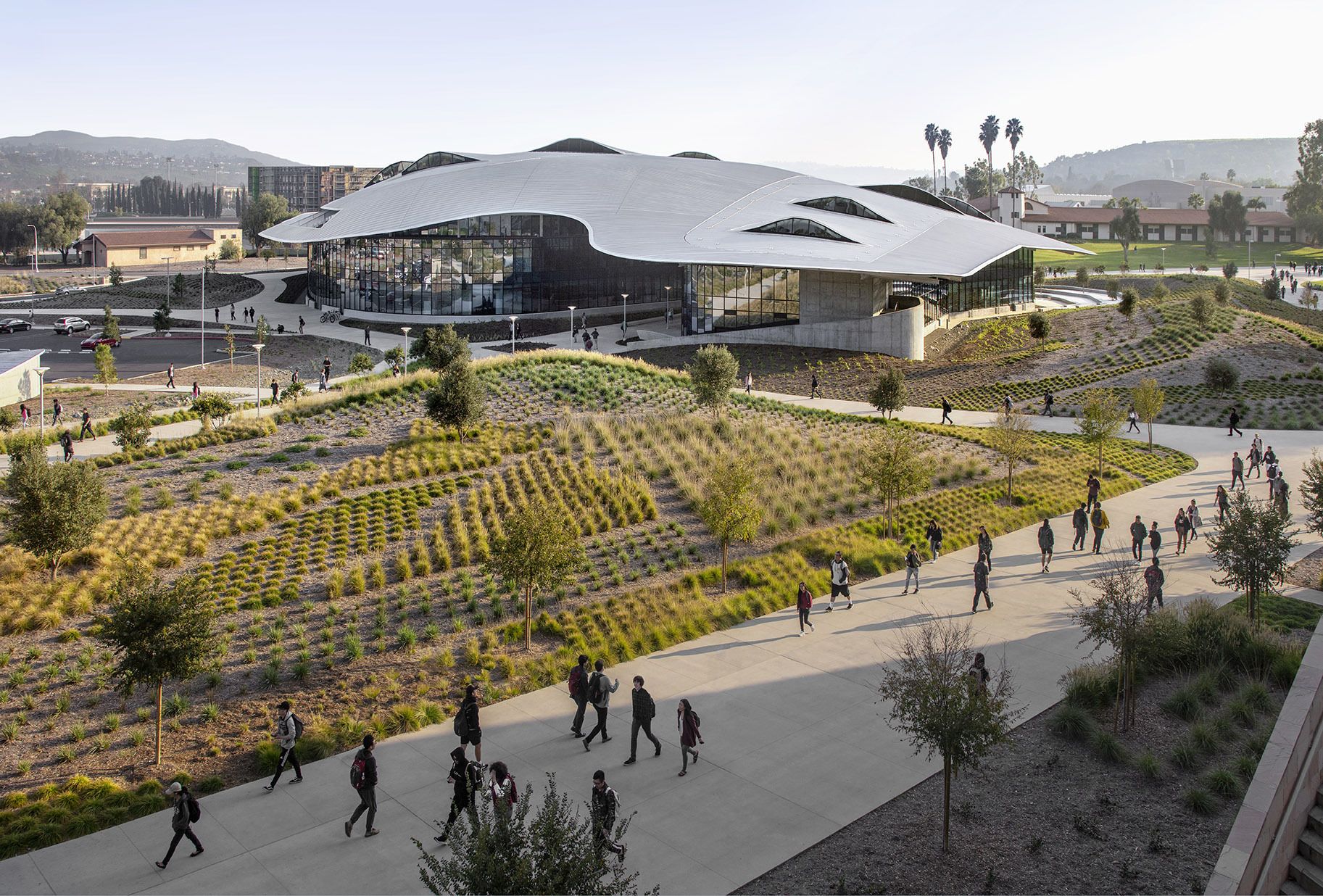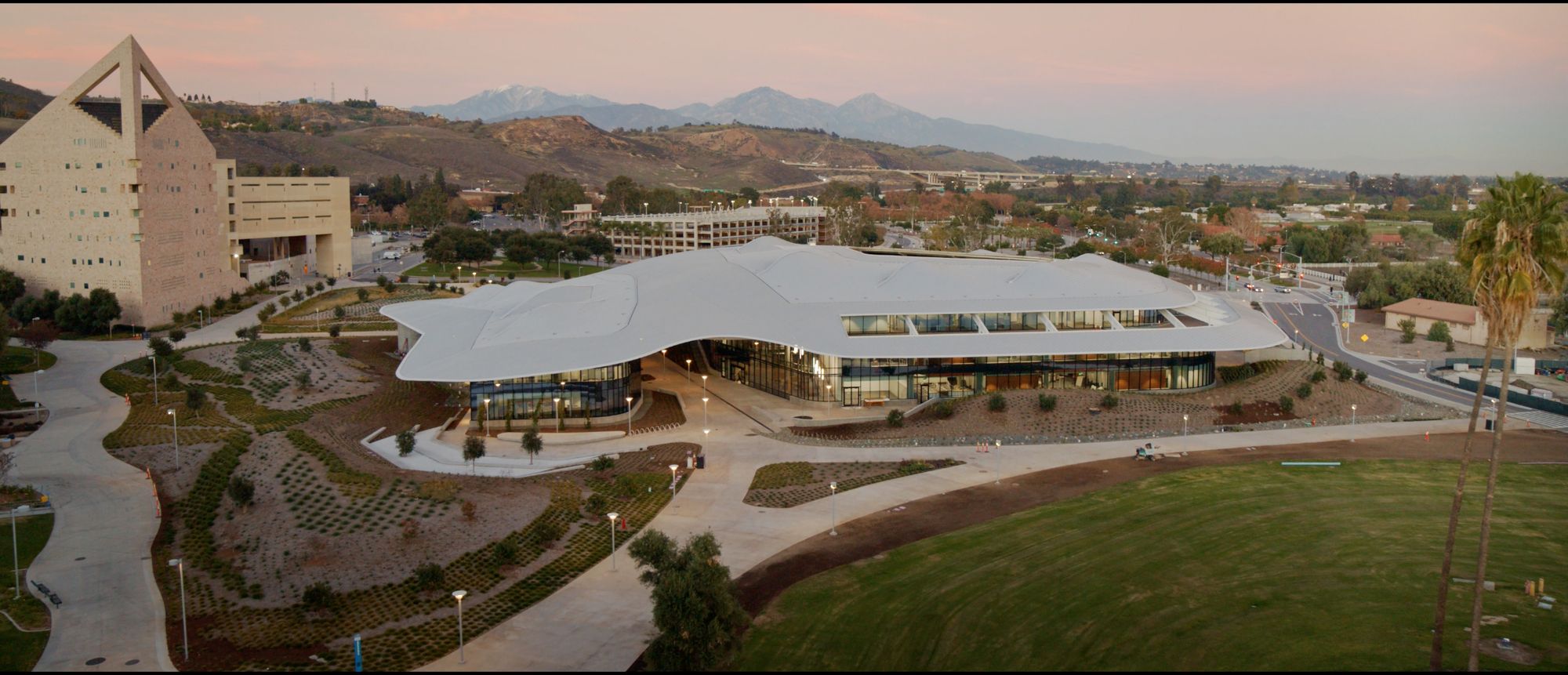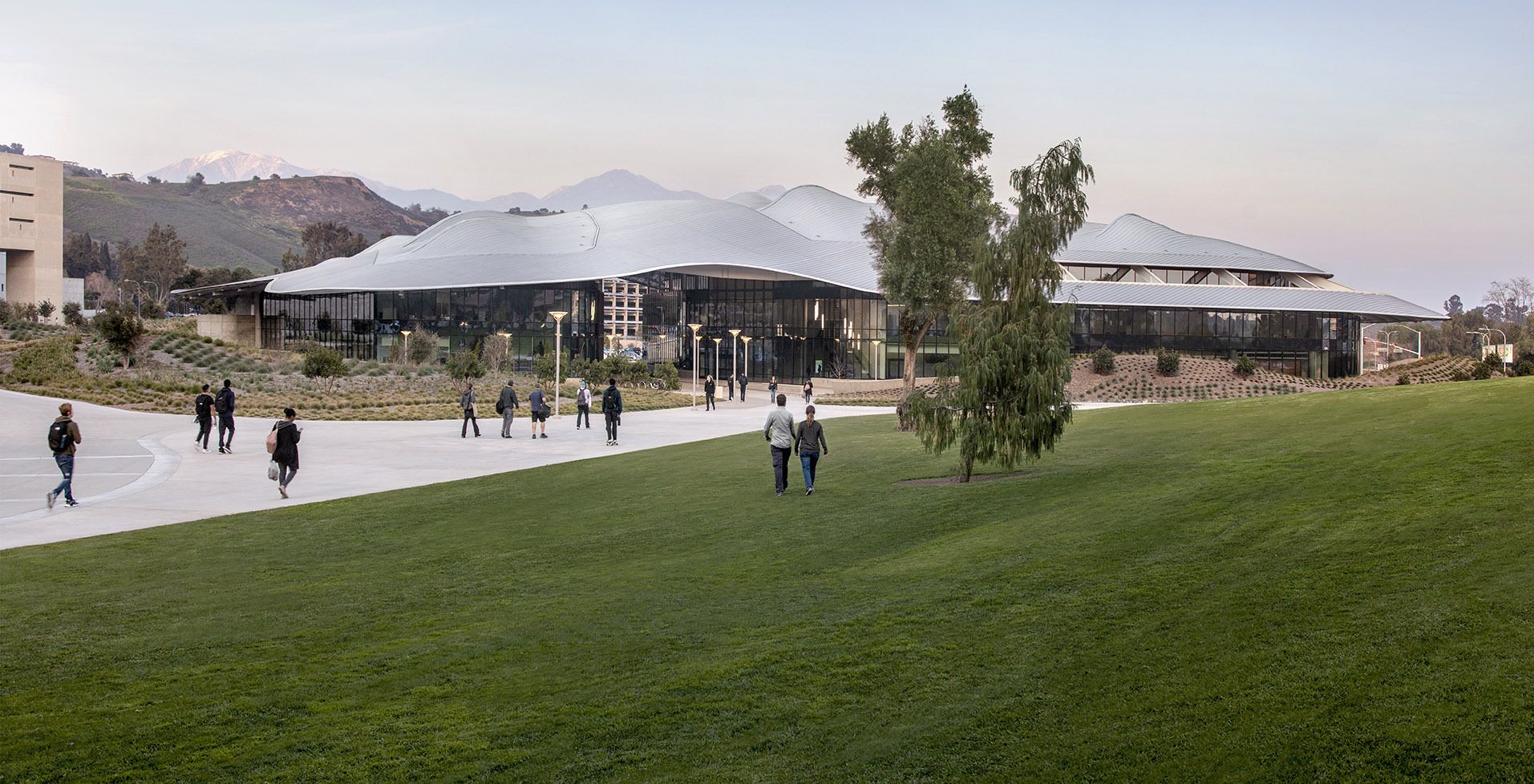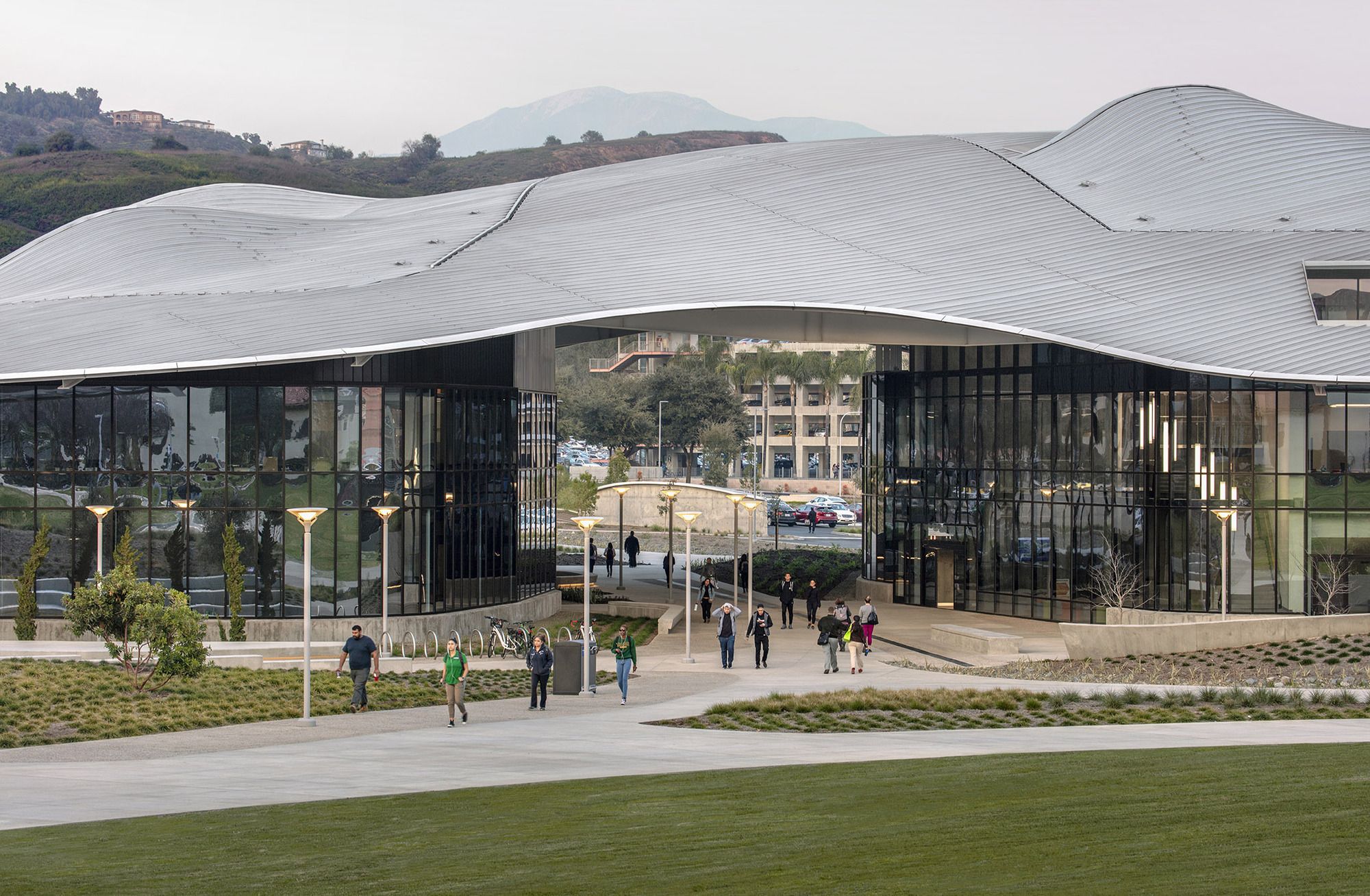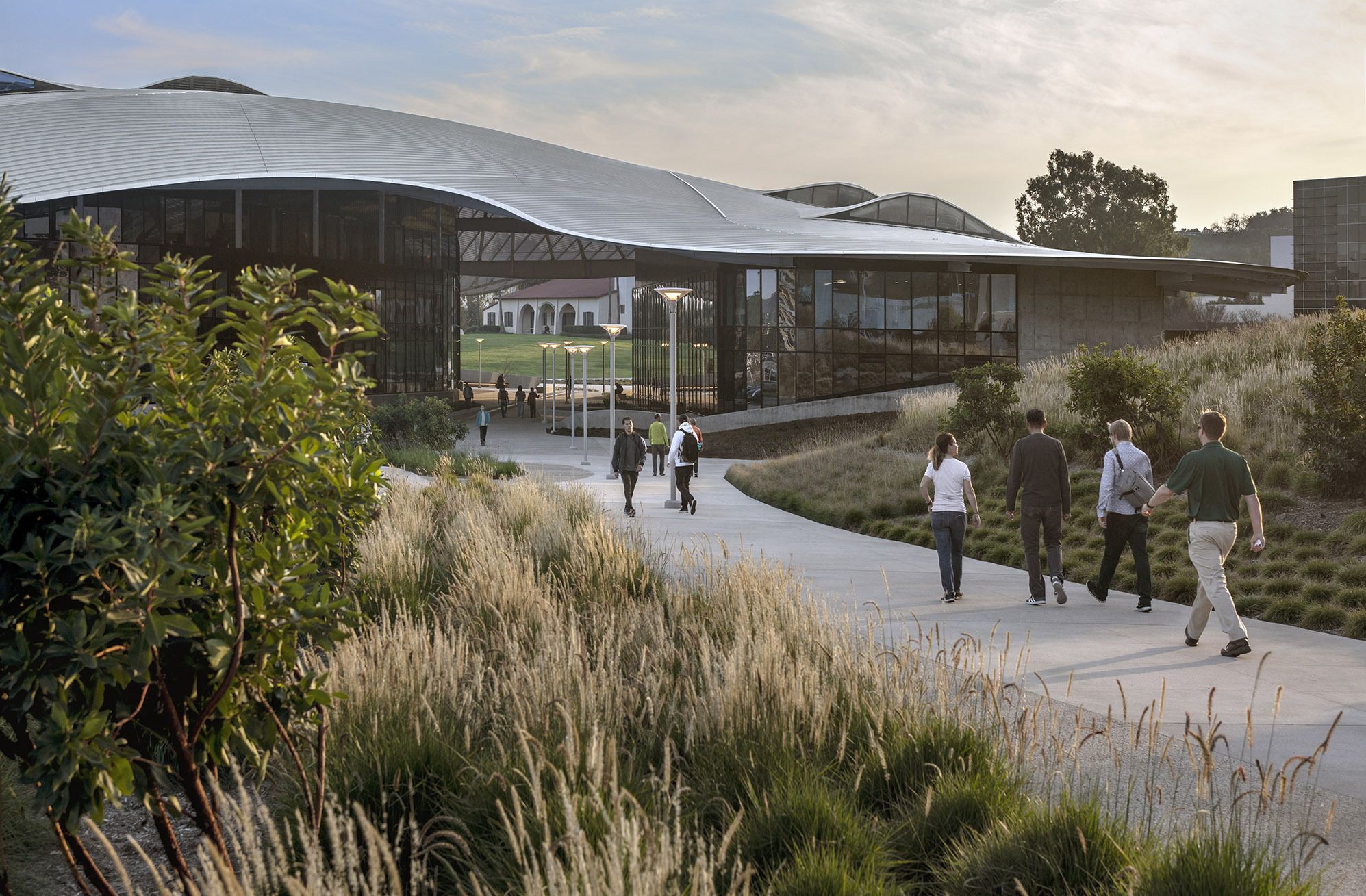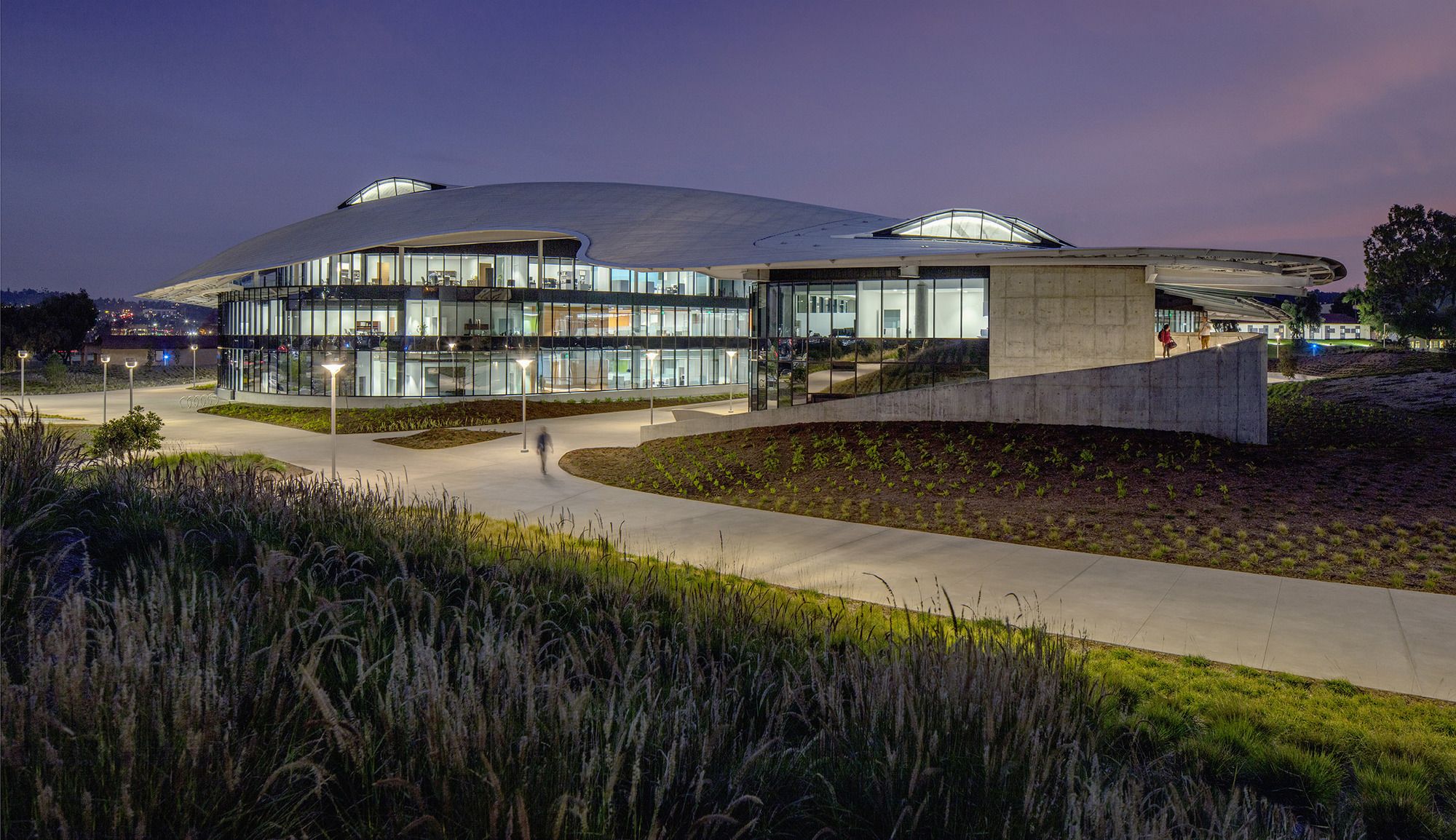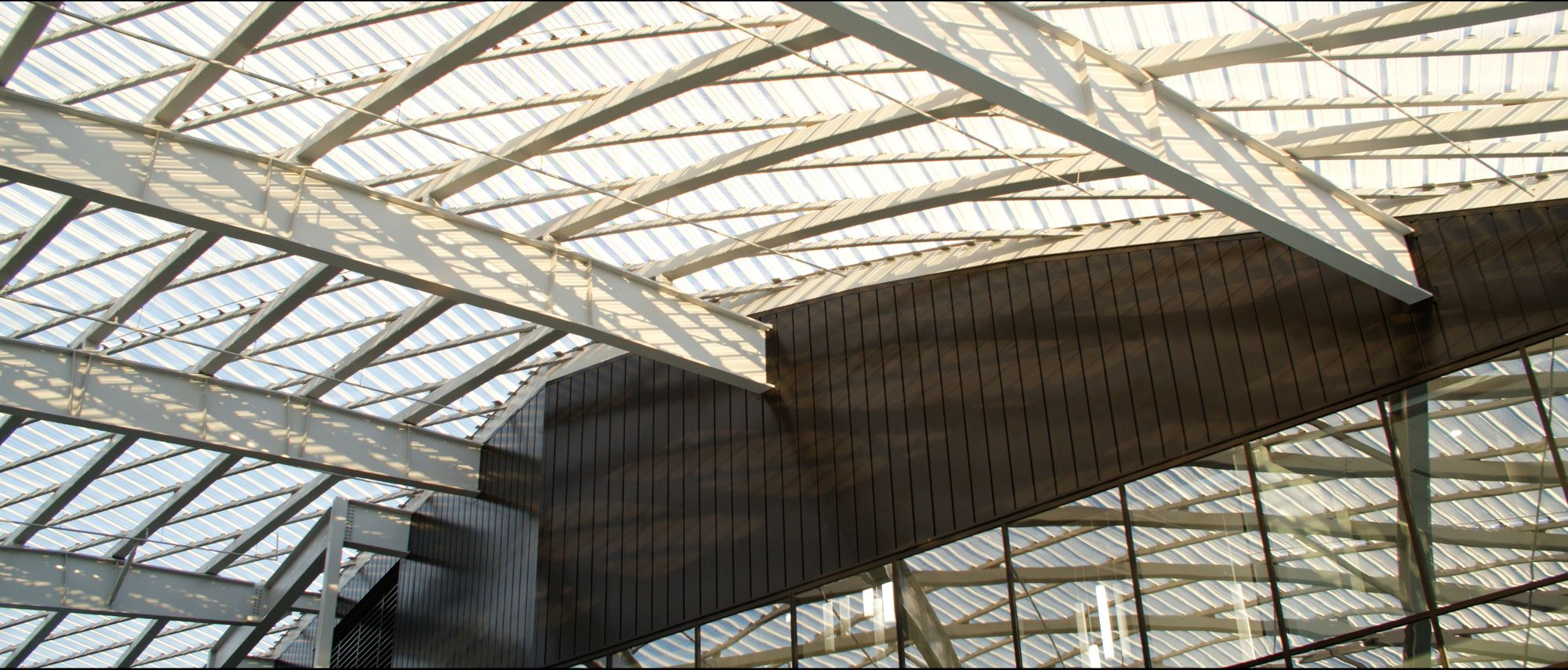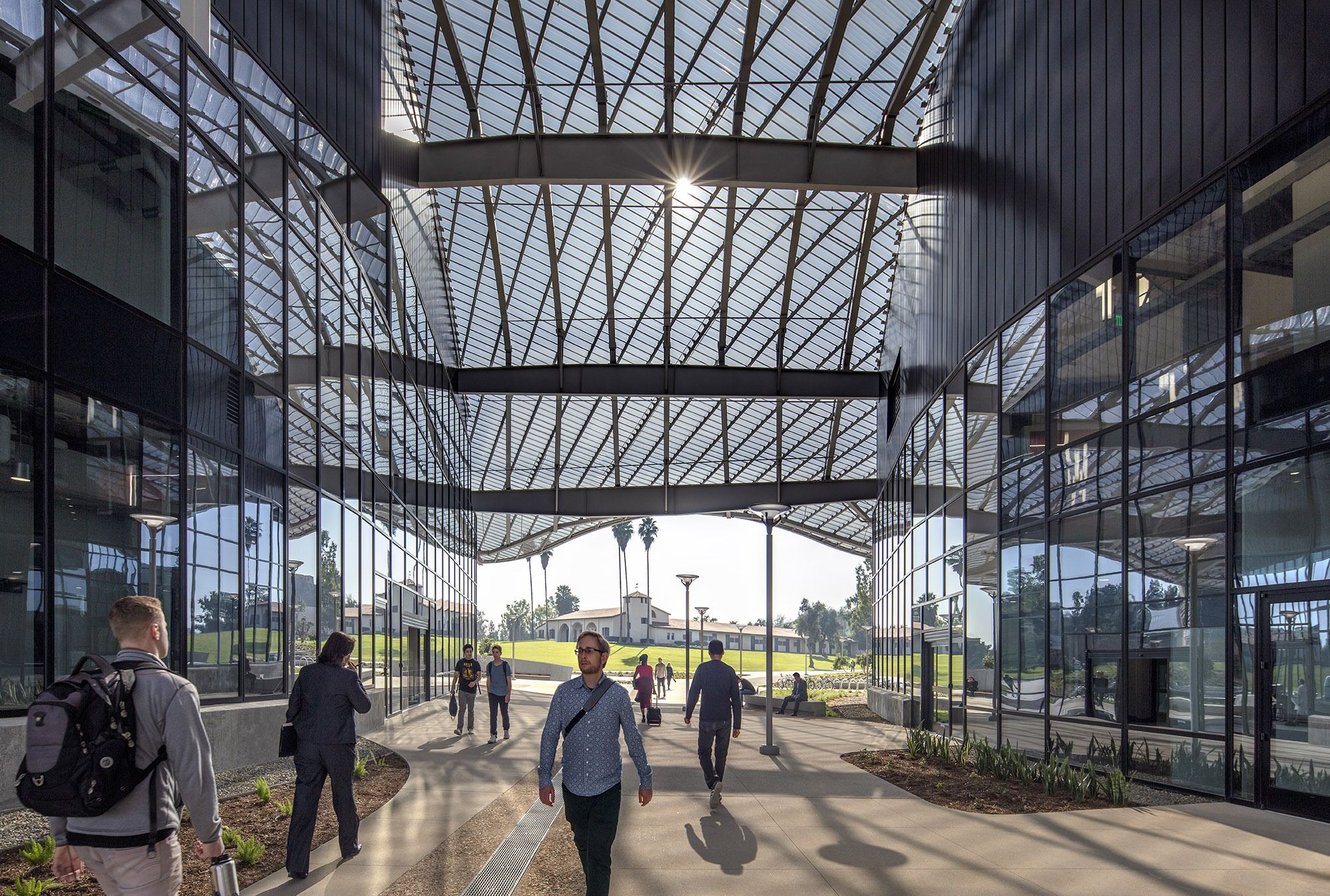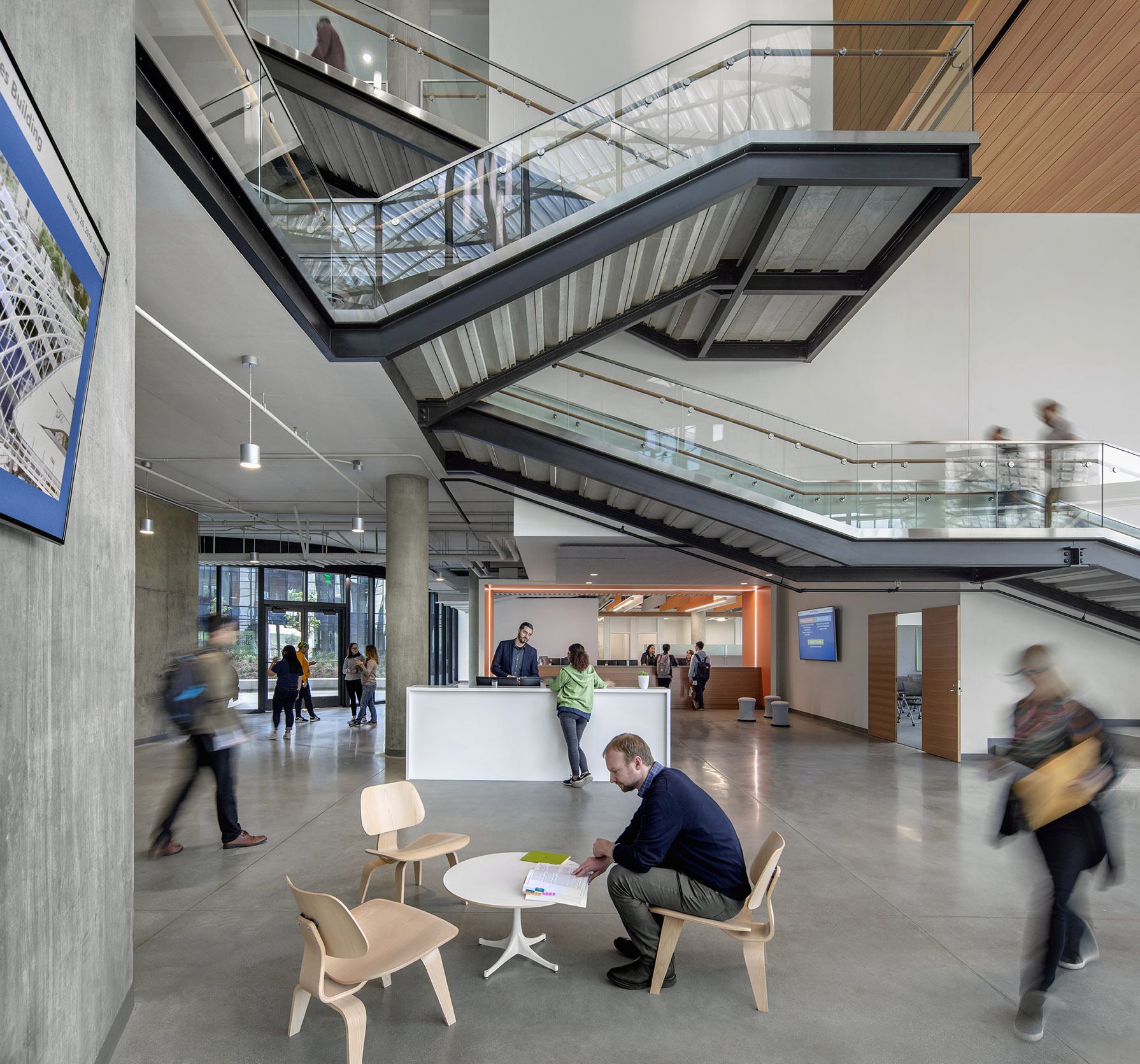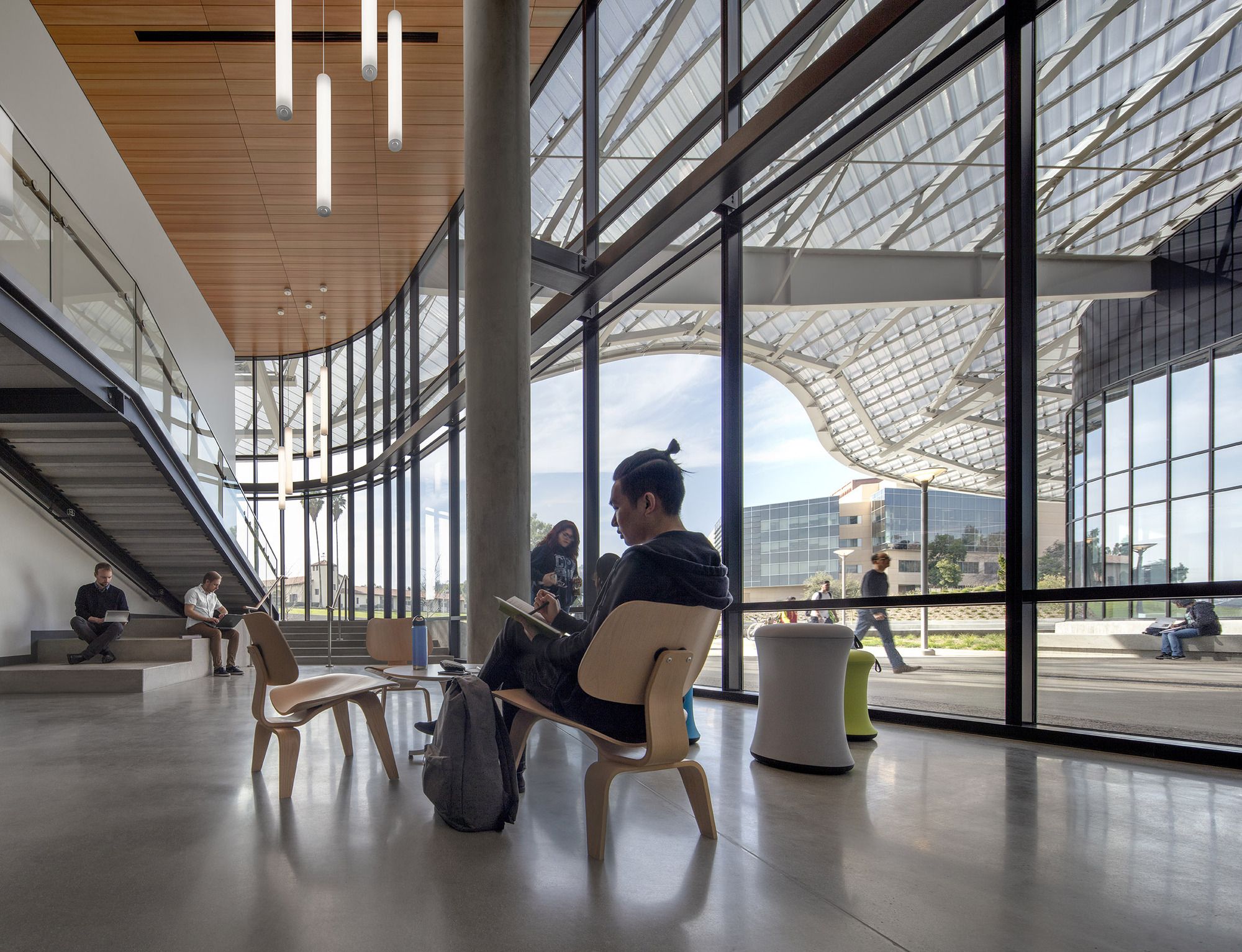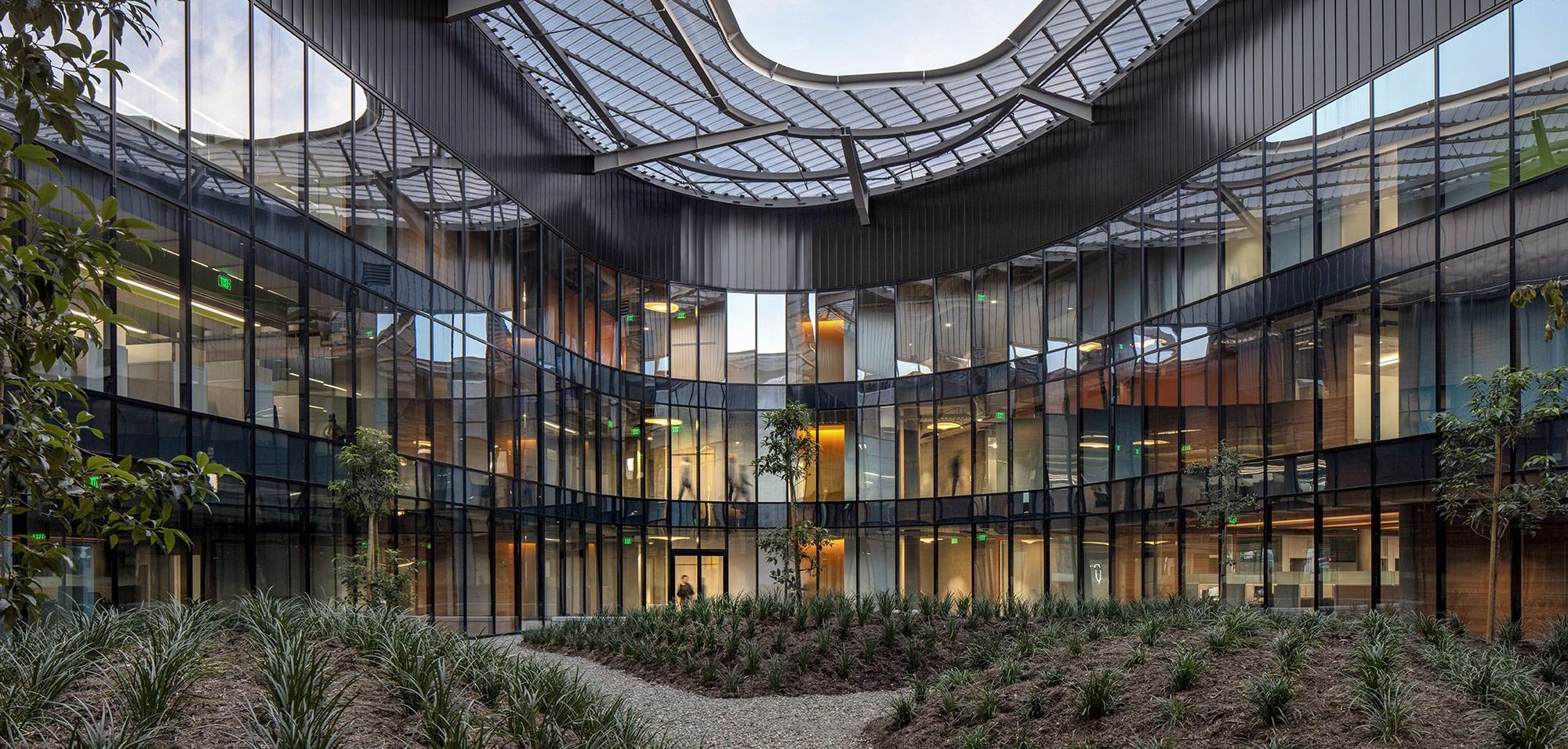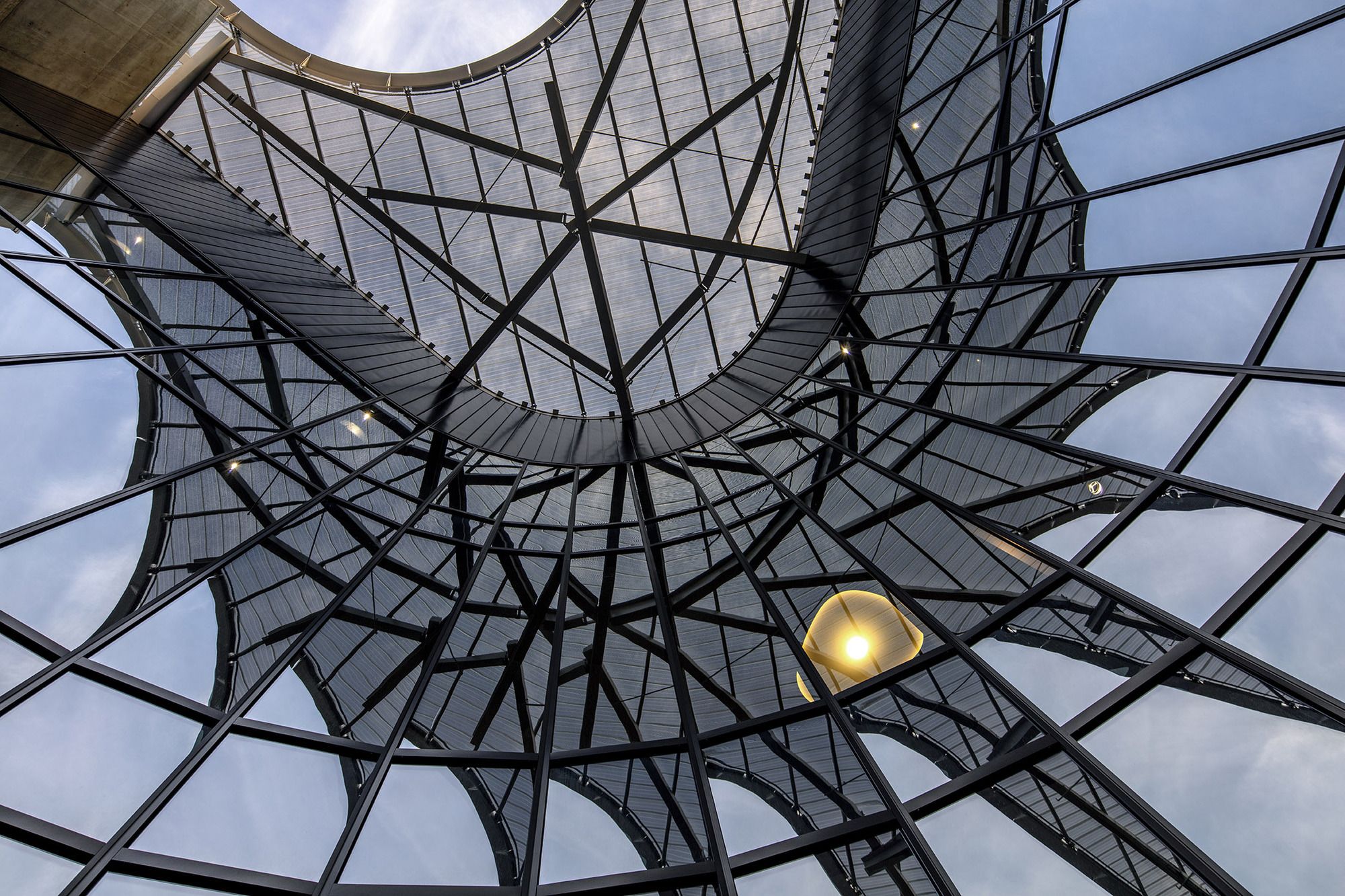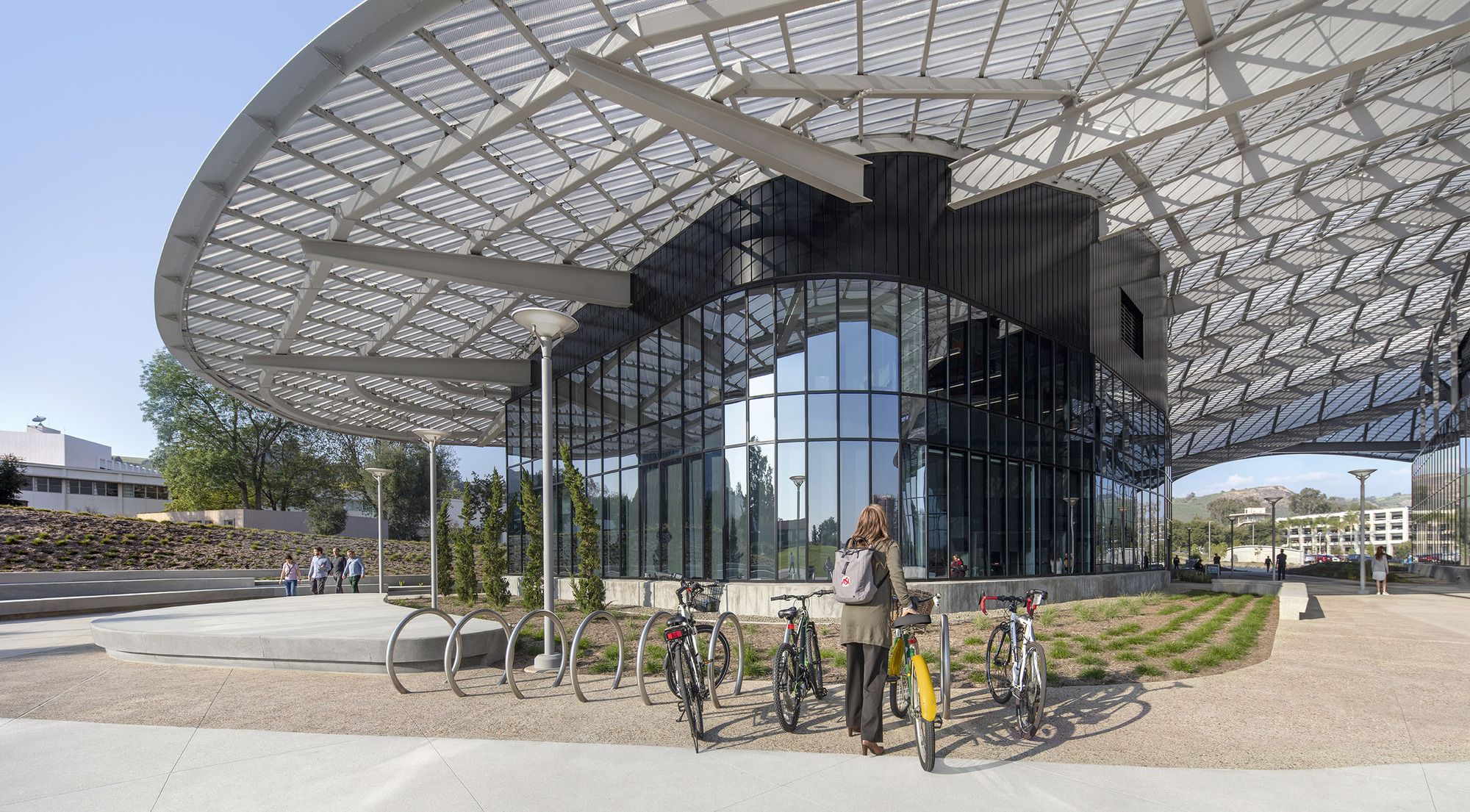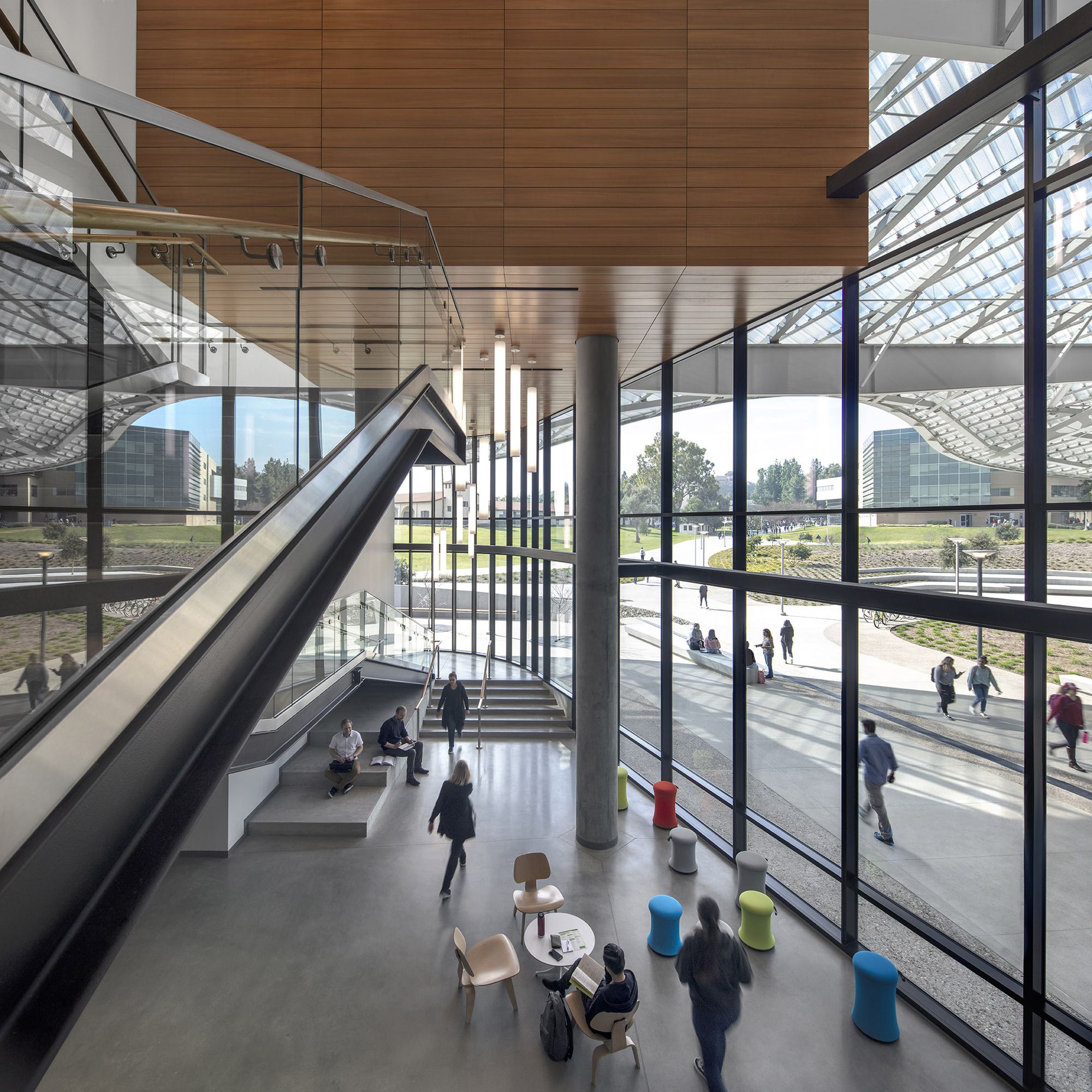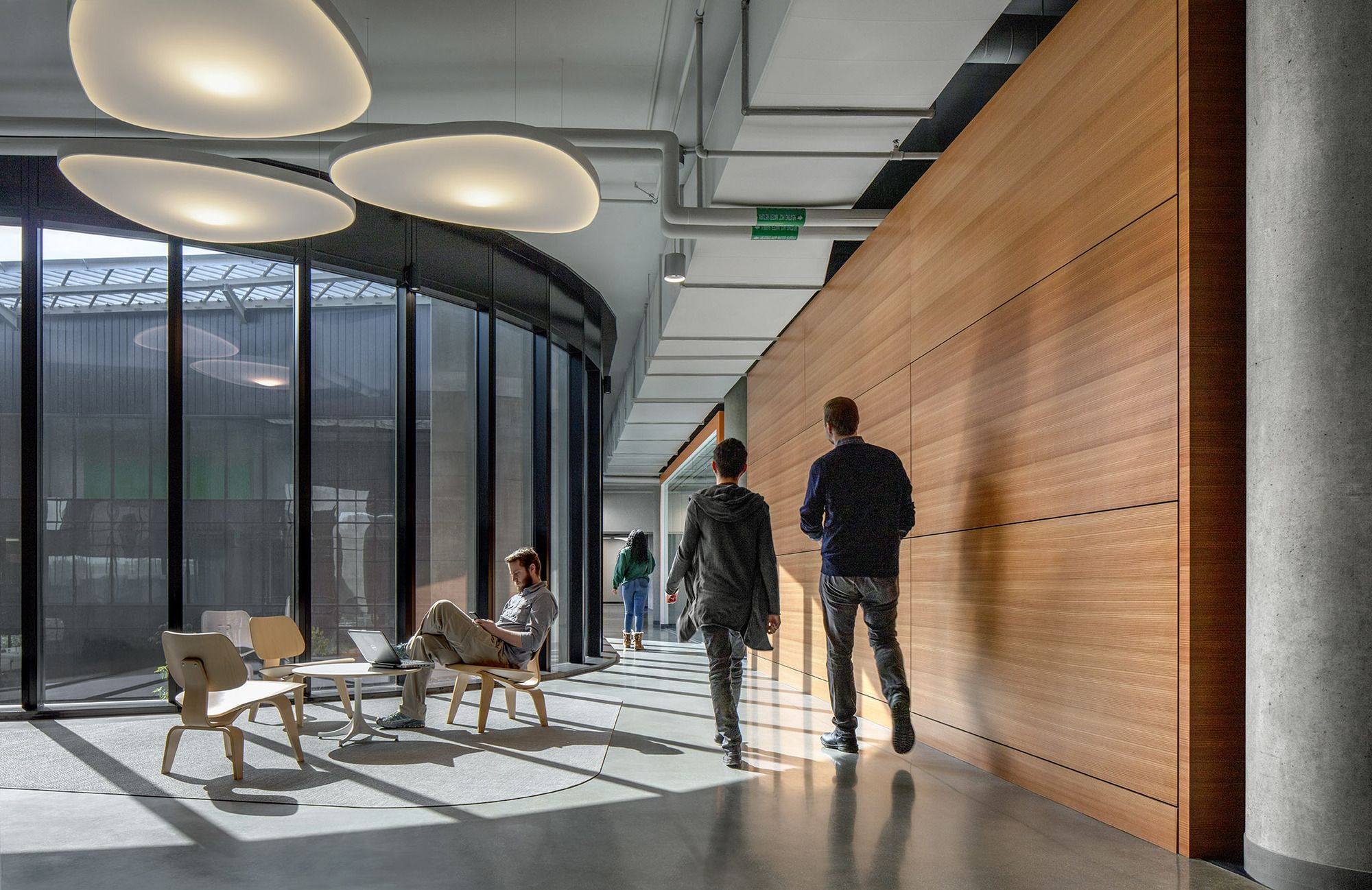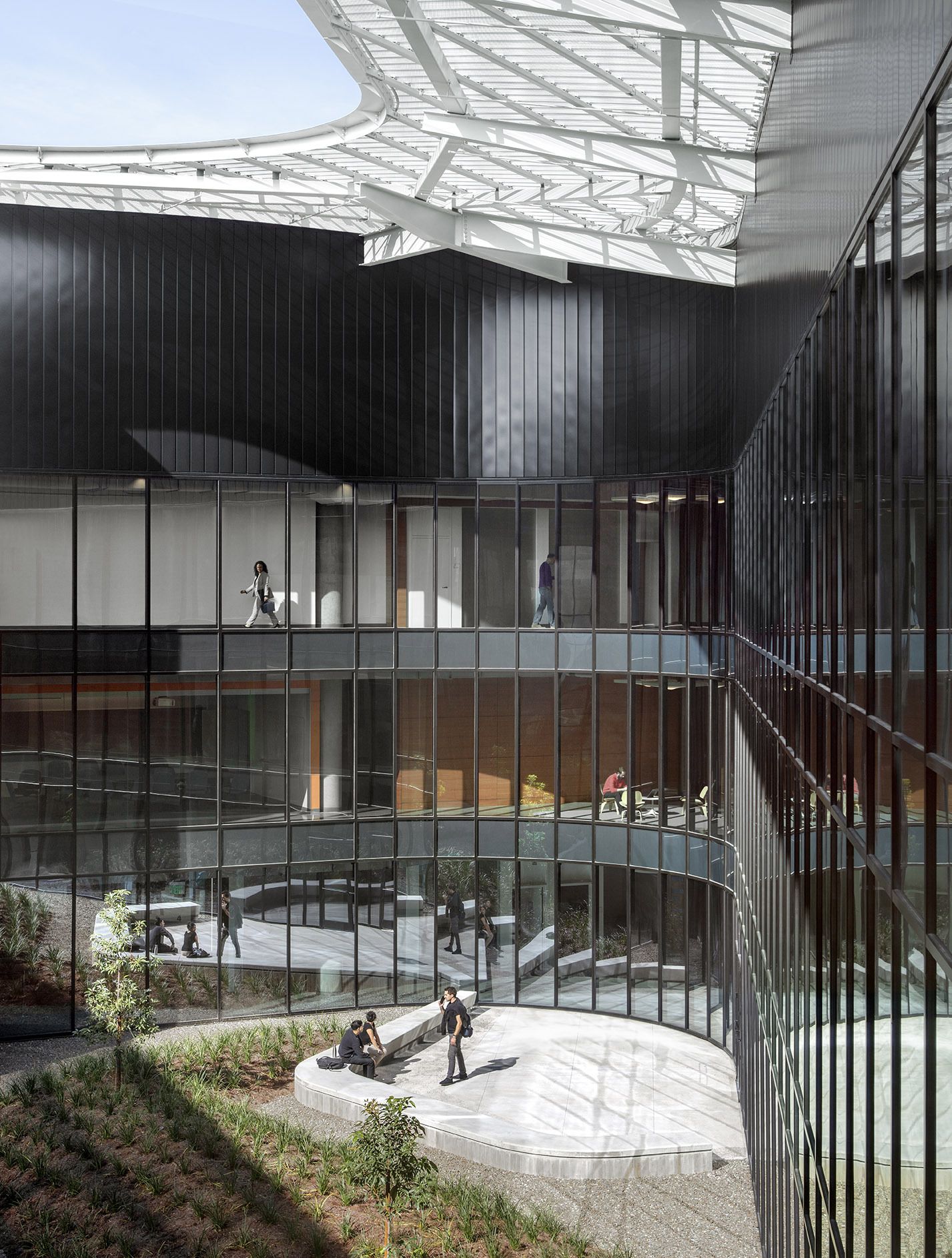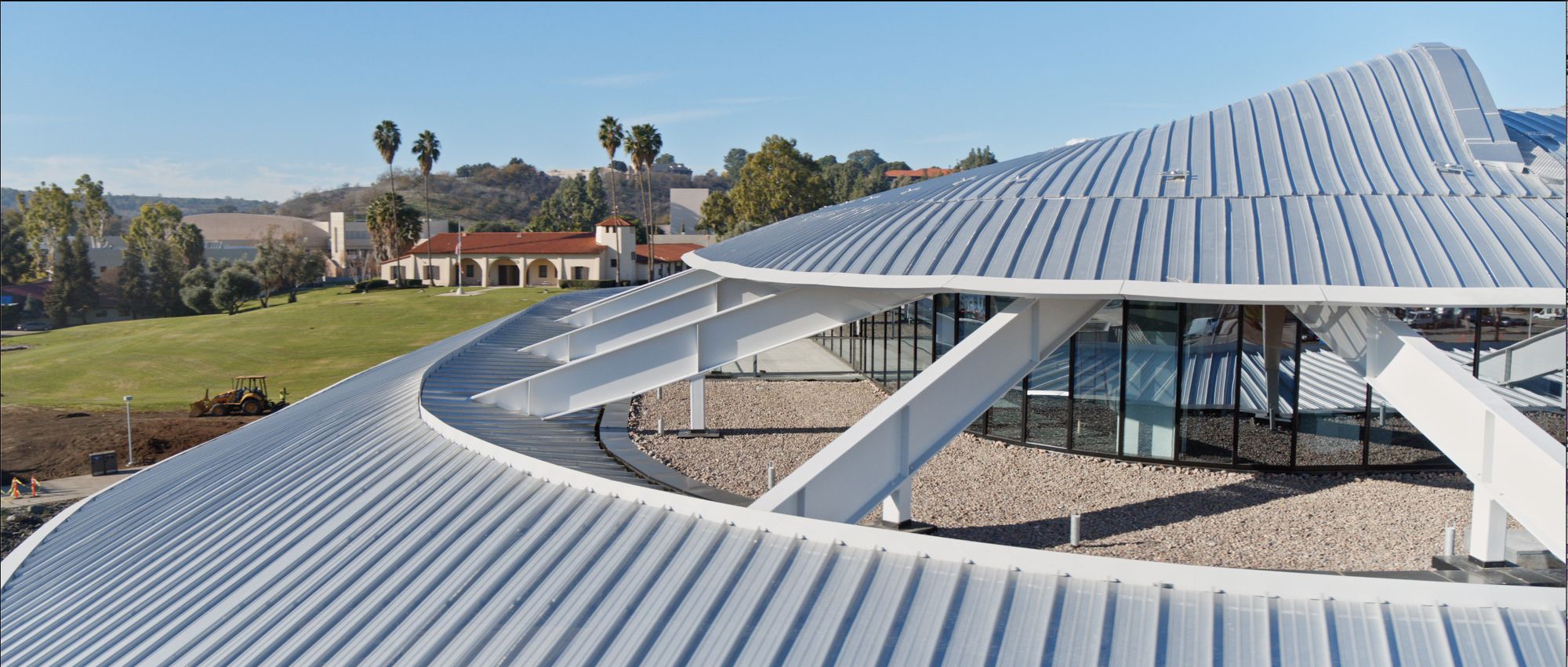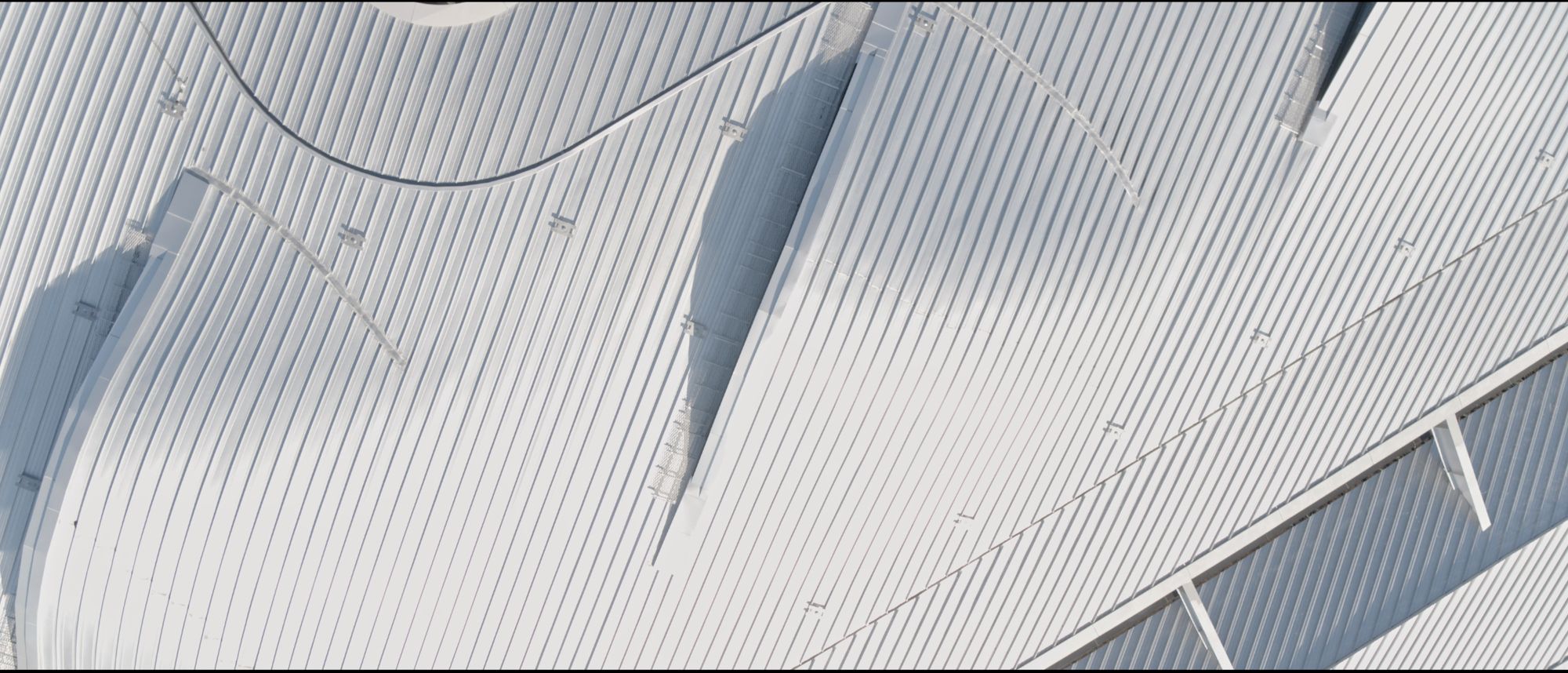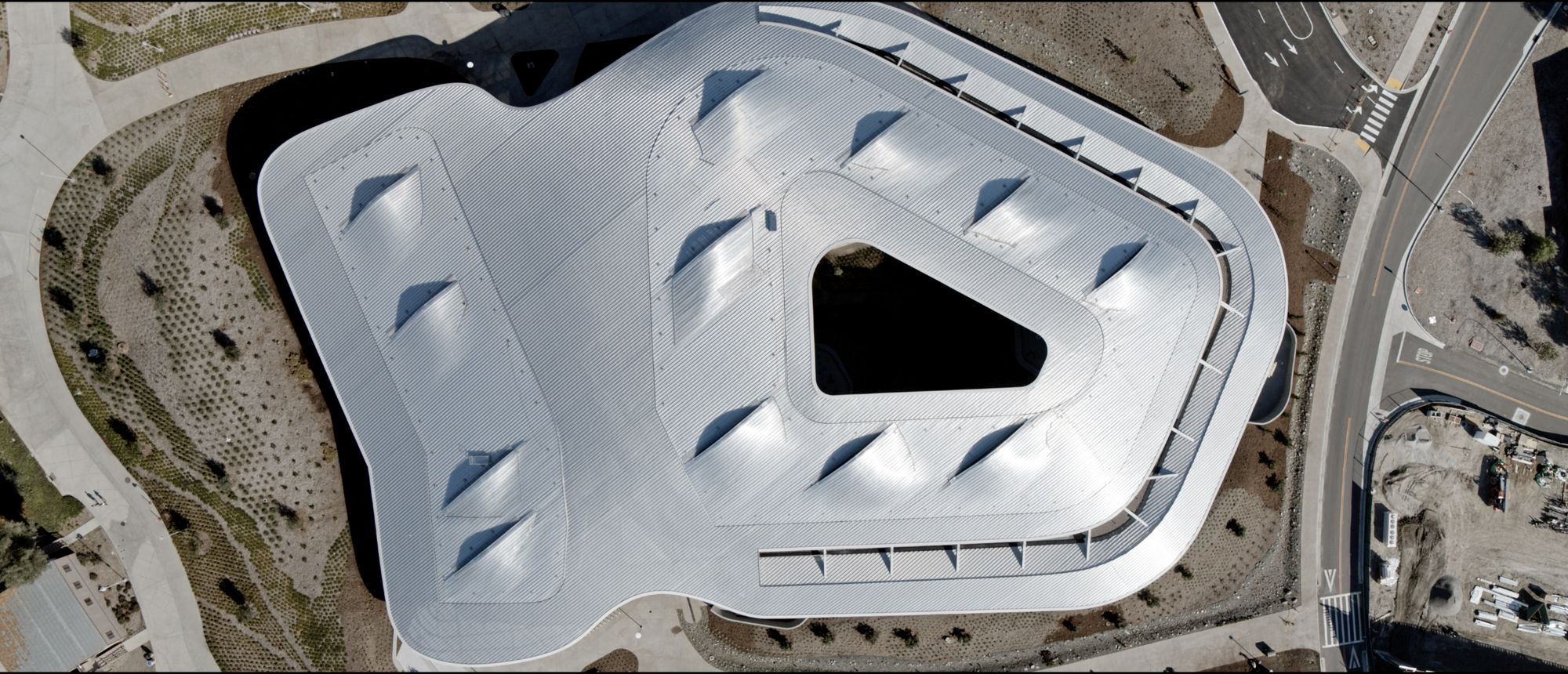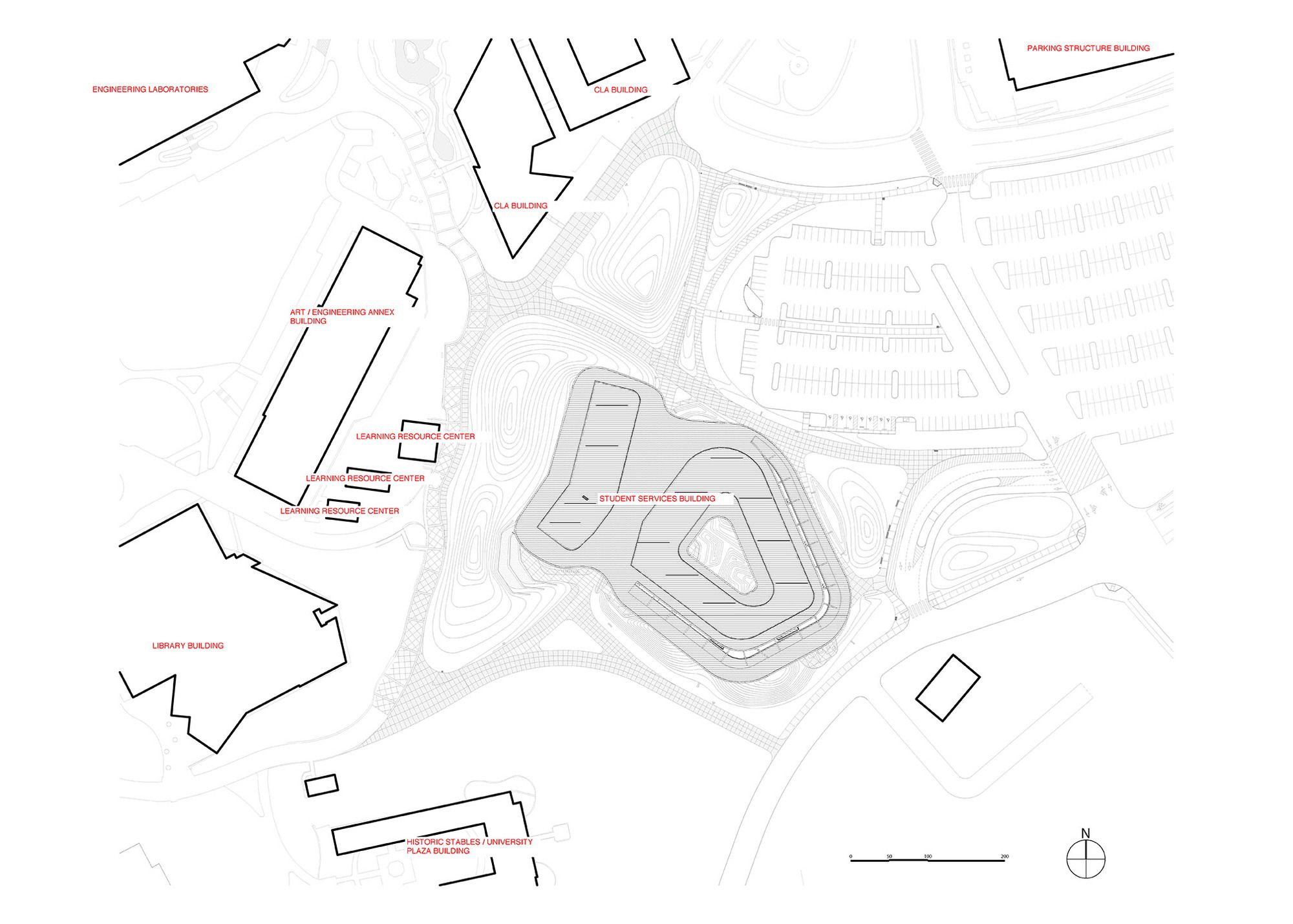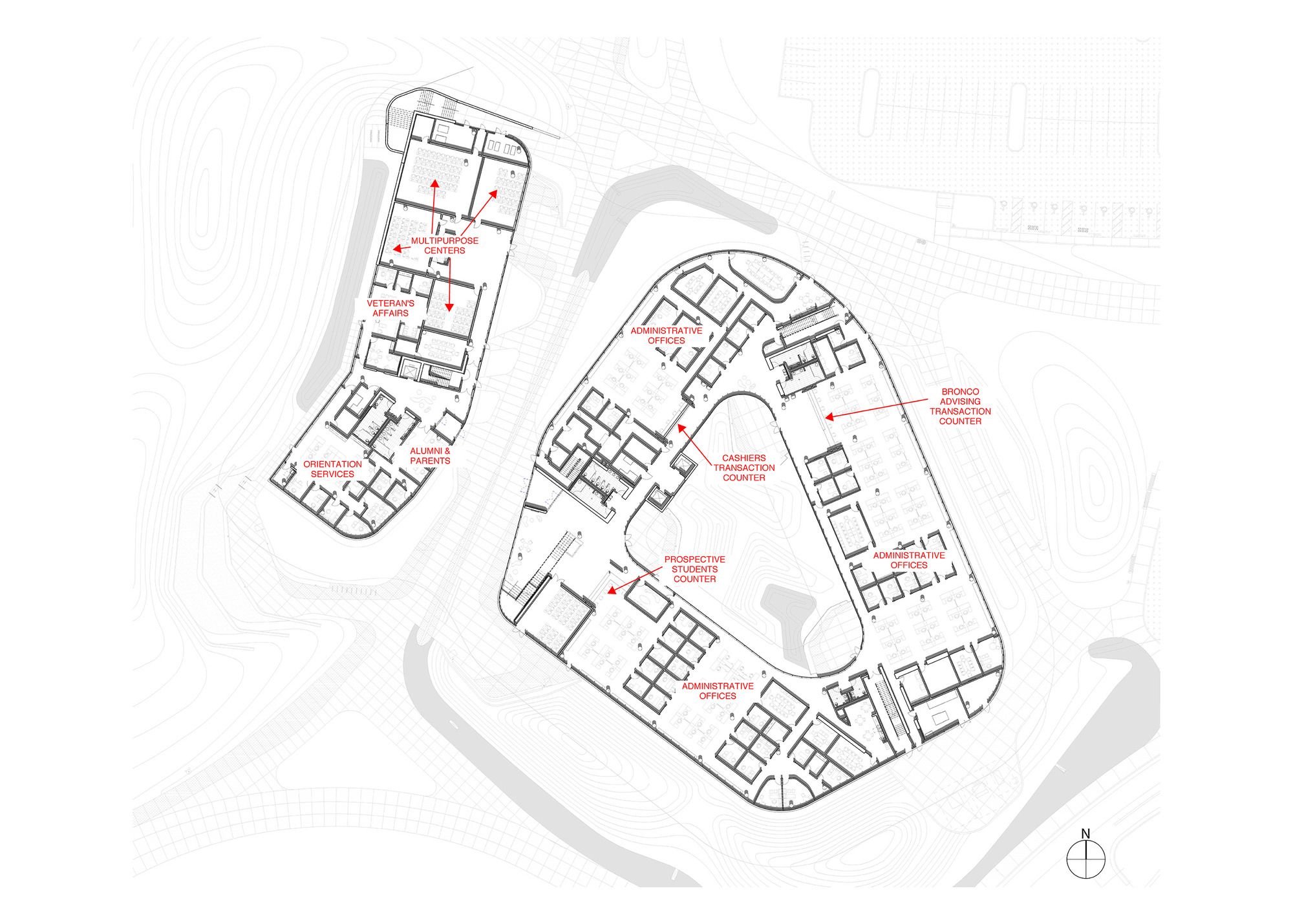Student Services Building
Student Services Building (SSB) designed by CO Architects, the 140,000‐square‐foot, as a new gateway to the California State Polytechnic University (Cal Poly) Pomona campus, roughly 30 miles east of Los Angeles. As the gateway building, SSB welcomes matriculating students who register for classes and apply for financial aid, prospective students and their families who meet at the site for campus tours, and alumni actively involved in the campus community.
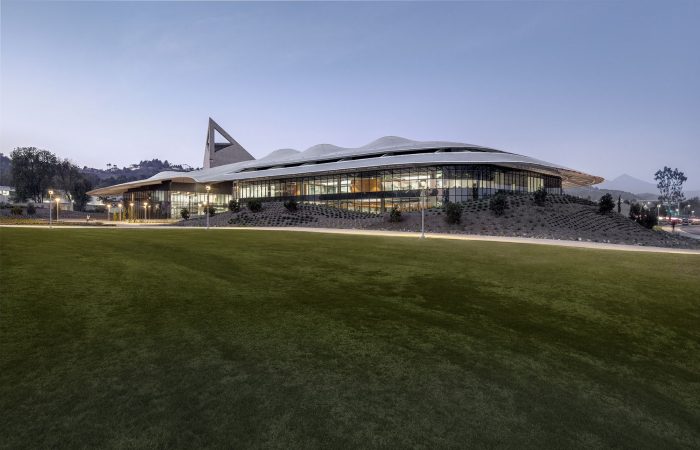
Photography by © Bill Timmerman
CO Architects topped the SSB with an undulating, standing‐seam aluminum roof that spans over two separate structures. The shape and orientation of this distinguishing feature is driven purely by performance and function with the aims to optimize energy management, maximize daylight, and offer views to the surroundings. The architects devised the roof as the primary performance driver for the curving building to achieve an advantageous Energy Use Intensity (EUI) of 31 (average is 65).
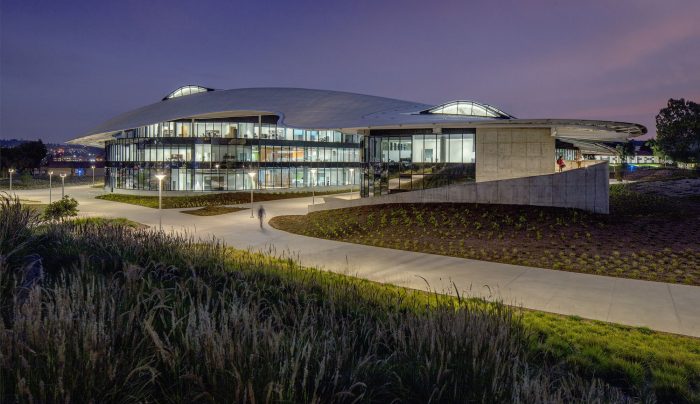
Photography by © Bill Timmerman
It further ties the building to its context by creating a memorable introduction to the university that references the topography of the campus, the foothills, and nearby San Gabriel Mountains. To mitigate the desert climate, the two‐acre roof acts as the main shading device. The architects used extensive daylight, glare, and solar heat‐gain analysis modeling to optimize the roof geometry, minimize energy loads for lighting and cooling, and increase user visual and thermal comfort. The project is LEED Platinum certified.
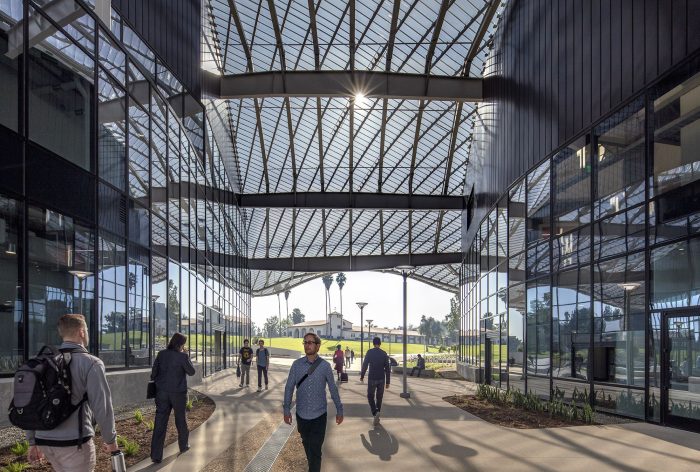
Photography by © Bill Timmerman
In addition to shading the open pedestrian path between the complex’s two wings, the 90,000‐square‐ foot roof’s perforated metal overhangs vary from five to 28 feet deep (depending on the orientation) to protect the aluminum‐framed, low‐e reflective glass exterior wall from the sun, filter dappled sunlight, and optimize daylight to the interiors. To achieve the complex curvatures of the standing‐seam roof, custom‐shaped panels were fabricated onsite utilizing roll‐form technology. The roof required approximately 19,000 attachment clips to keep panels in place. The continuous East‐West alignment of the standing seams gives the roof texture and grain, while allowing skylights to provide more daylight to the top floor. Standing‐seam roofs are rarely as complex. This innovative application is in line with CO Architects’ approach to using digital technology to explore, analyze, and optimize options, as well as to facilitate the transition from design straight to fabrication and installation using BIM.
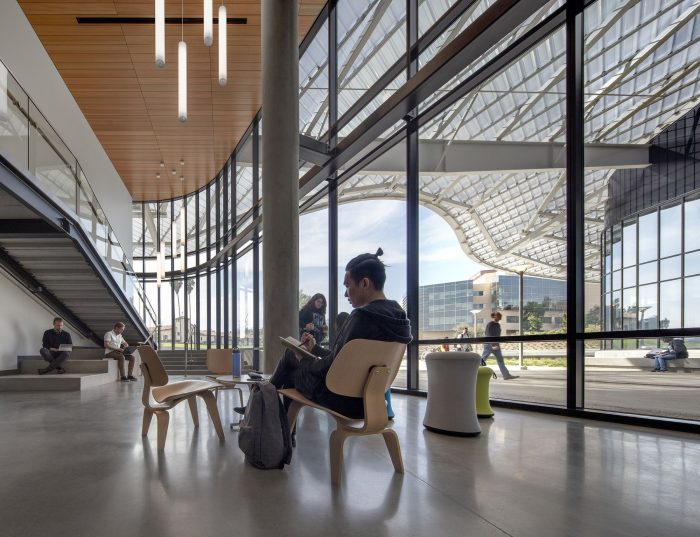
Photography by © Bill Timmerman
The broad, open breezeway separates the main, three‐story building from the two‐story wing housing the multi‐purpose center and human resources department. This arcade leads from the main parking area to the student union and library, and is designed to feel like a shaded outdoor street, lined with seating and gathering amenity spaces, while connecting students to the heart of the campus. The three‐story lobby staircase is open and inviting to encourage vertical circulation, collaboration, and spontaneous conversation among building occupants.
The main building, occupied by student services and most of the administrative offices, uses 62‐foot‐wide floorplates to maximize the amount of daylight reaching the interior, where open offices extend from one side to another. Modular planning and strategic placement of building‐core elements (shafts, utility rooms, restrooms) allow for flexible and easily re‐configurable space. Interior finishes are accented for intuitive wayfinding, with color defining different departments through paint and acoustical baffles made of compressed recycled plastic.
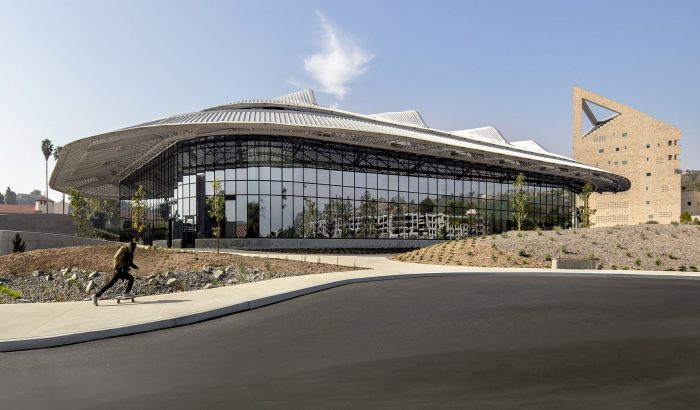
Photography by © Bill Timmerman
From inside the facility, views open to a central courtyard that delivers light to the interior spaces. This outdoor area features 50‐foot‐tall trees (once fully grown) and courtyard seating as spillover space for students waiting to access the service centers or meet with university staff. Conference rooms are strategically circulated around the courtyard to provide users with open views and access to natural light, as well as to encourage shared use and boost utilization. On the top floor, offices for the university president and provost are situated within an open, loft‐like space with high ceilings, clerestory windows, and terrace access near all staff breakrooms.
Lighting fixtures are LED throughout and horizontal distribution of air ducts and cable trays have been clearly zoned to avoid conflicts, maximize efficiency, and maintain easy access. In addition to passive, mechanical, and lighting strategies, the concrete structure provides thermal mass to stabilize peak load demand and drive down energy consumption for cooling. The solar‐optimized design has the potential to provide naturally lit workspaces for the majority of the eight‐hour work period, thereby reducing energy loads and increasing wellness benefits.
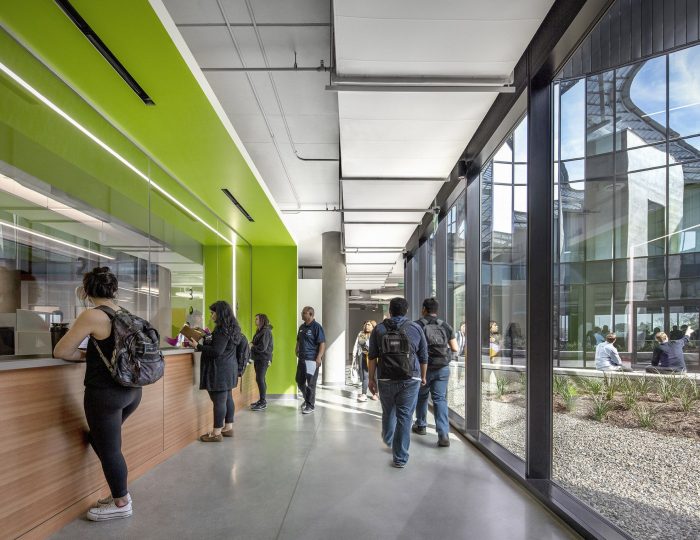
Photography by © Bill Timmerman
Landscape. Spurlock Landscape Architects has taken a master planning approach to this design to create a unified vision to make the East Campus area more functional, help coordinate future work in surrounding areas, and build overall cohesiveness. The organic nature and shape of the building—along with landscaped berms planted with drought‐tolerant grasses—mimic the surrounding foothills and create the impression that the building is growing out of the landscape.
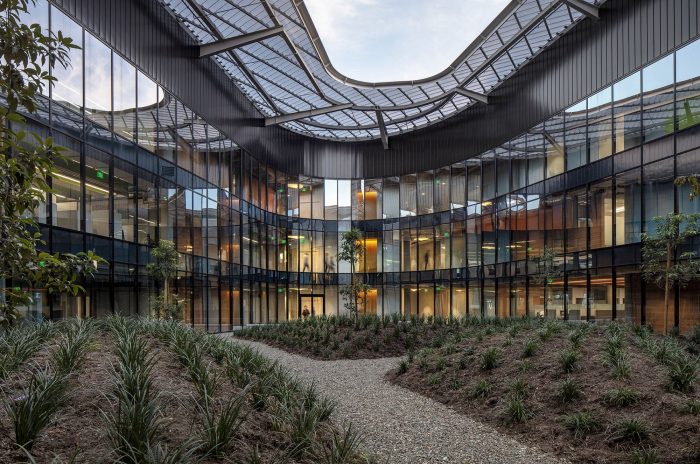
Photography by © Bill Timmerman
The new building adjoined by the undulating roof features a wide central plaza at ground level. This central node has seamlessly weaved itself into the major campus circulation system. Reflecting a dynamic shadow pattern from the roof canopy above, the space serves as an outdoor respite, a lobby space, and place to pause—to make a call, meet a friend, or enjoy a coffee. It is large enough to accommodate small food carts and offers areas for gatherings of various scales, as well as break‐out spaces for students, staff, and visitors.
Combined with a sturdy plant palette, custom wall‐mounted benches, and ample shade, the plaza offers a welcoming student services experience. A dual‐purpose decorative metal band cuts through the central plaza. In addition to adding an artistic gesture, it channels stormwater and roof runoff to a vegetated bioswale, where the water slowly infiltrates into the site’s capture system. This reclaimed water is used to irrigate the new landscape, unburdening the campus’s potable water system.
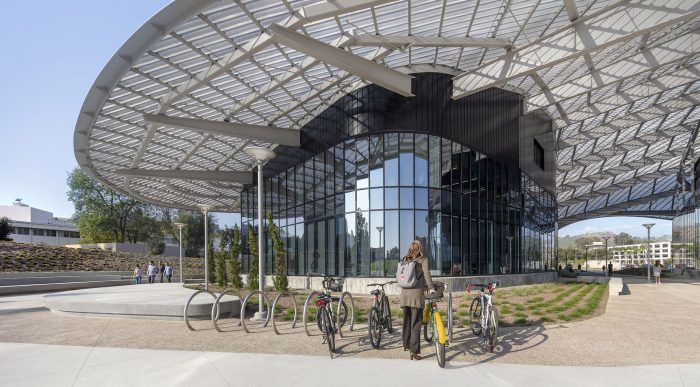
Photography by © Bill Timmerman
Project Info
Architects: CO Architects
Location: Pomona, California, United States
Area: 140000 ft²
Project Year: 2018
Photographs: Bill Timmerman
Manufacturers: Skyfold, Guardian Glass, Kalzip, Kawneer
Photography by © Bill Timmerman
Photography by © Bill Timmerman
Photography by © Bill Timmerman
Photography by © Bill Timmerman
Photography by © Bill Timmerman
Photography by © Bill Timmerman
Photography by © Bill Timmerman
Photography by © Bill Timmerman
Photography by © Bill Timmerman
Photography by © Bill Timmerman
Photography by © Bill Timmerman
Photography by © Bill Timmerman
Photography by © Bill Timmerman
Photography by © Bill Timmerman
Photography by © Bill Timmerman
Photography by © Bill Timmerman
Photography by © Bill Timmerman
Photography by © Bill Timmerman
Photography by © Bill Timmerman
Photography by © Bill Timmerman
Photography by © Bill Timmerman
Photography by © Bill Timmerman
Photography by © Bill Timmerman
Photography by © Bill Timmerman
Site Plan
Floor Plan


